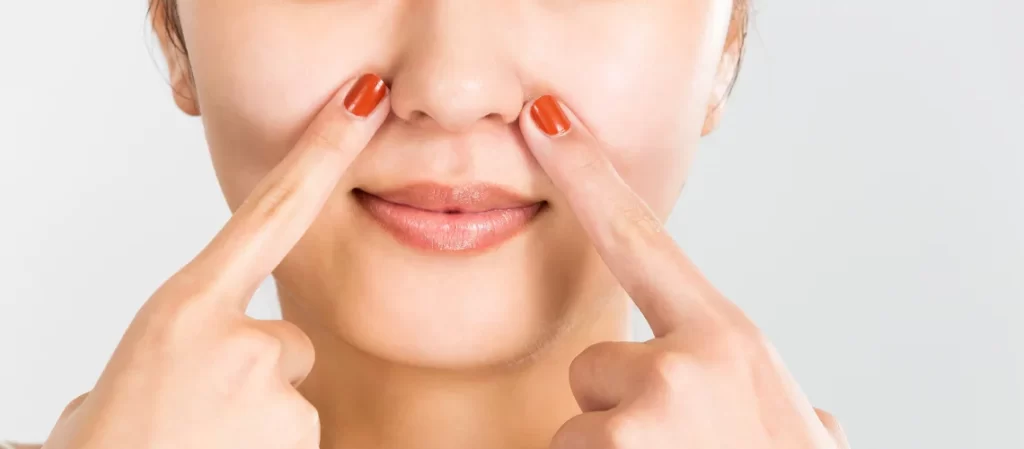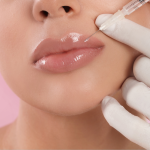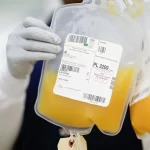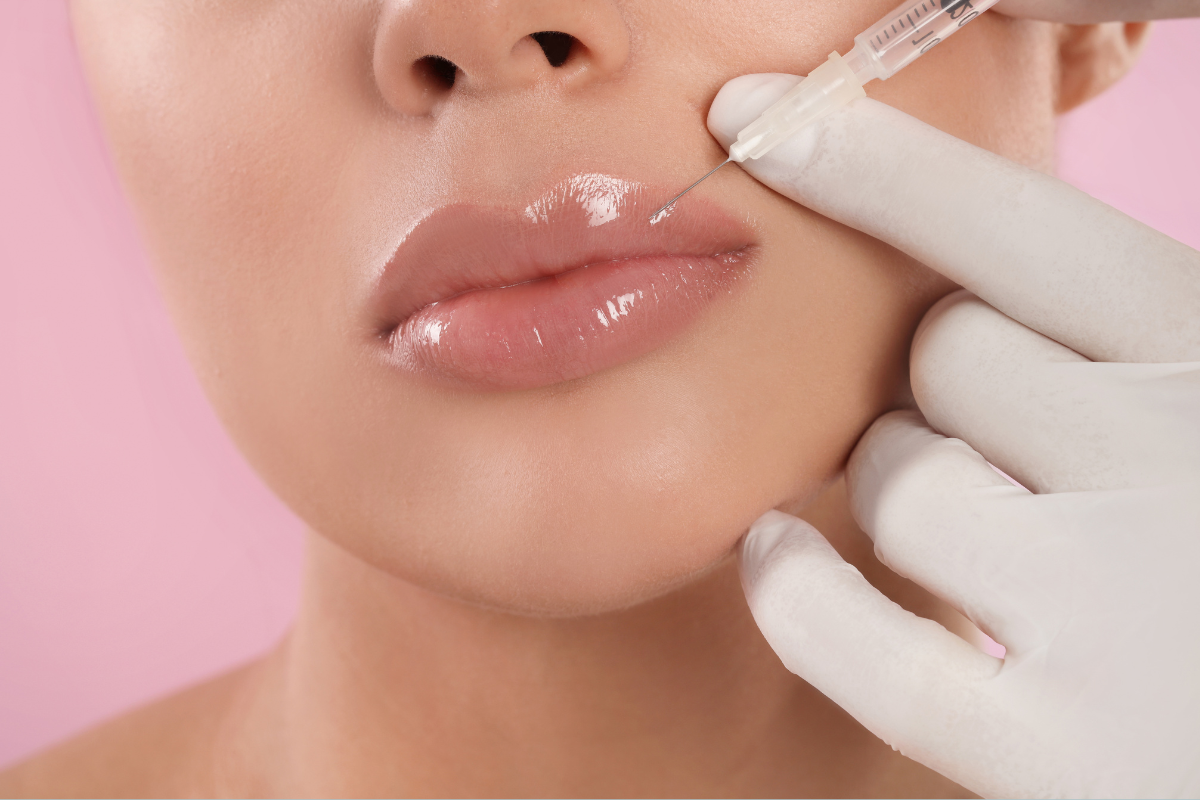The difference people notice in Accutane nose before-and-after photos comes from reduced swelling and oil, not from actual structural change. Accutane decreases inflammation and shrinks sebaceous glands, which makes the skin around the nose appear tighter and smoother.
This creates a more defined look, giving the illusion of a smaller nose. The treatment refines skin texture and minimizes pores, but it does not alter bone or cartilage. In short, the visible improvement reflects healthier skin, not a reshaped nose.
At DermOnDemand, led by board-certified dermatologist Dr. Hannah Kopelman, patients receive clear medical guidance to understand what actually changes and what’s only perception.
Key Takeaways
- Accutane does not change the bone or cartilage of the nose – the visible difference comes from reduced swelling, oil, and inflammation.
- The “Accutane nose job” effect occurs when sebaceous glands shrink, making skin appear smoother and more defined.
- These changes are temporary surface-level improvements that stabilize after treatment ends.
- Before-and-after photos often exaggerate results due to lighting, reduced inflammation, and improved skin clarity.
- Consulting a board-certified dermatologist, like Dr. Hannah Kopelman at DermOnDemand, ensures safe treatment and accurate guidance throughout Accutane therapy.
Isotretinoin Nose Changes: What to Expect
Why the Nose Looks Different
Accutane, known generically as isotretinoin, works by reducing oil production and inflammation in acne-prone skin. As swelling decreases, facial contours become more defined, making the nose appear slimmer.
For more on how Accutane and oily skin interact, this connection explains why many patients see improved facial texture during treatment. This doesn’t mean the bone or cartilage changes – the difference comes from reduced puffiness around the face.
Inflammation and Oil Reduction
Isotretinoin targets the sebaceous glands, shrinking them and limiting oil secretion. Understanding common isotretinoin side effects and how they relate to skin changes can help patients stay informed. Reviewing dermatologist guidance is a good place to start.
This lowers inflammation and prevents new cystic acne lesions. When the surrounding tissue loses excess oil and swelling, the nose can look sharper in photos or in the mirror, which explains many “before and after” impressions.
Texture and Pore Improvements
Many patients also see smoother skin and smaller-looking pores. With less oil buildup, blackheads clear, and the skin’s surface refines. These surface changes are temporary and linked to consistent treatment, not structural reshaping.
Accutane Nose Shape: Myths vs. Reality

Does Accutane Change Your Nose Shape?
The “Accutane nose job” idea spread through social media as users compared photos showing a thinner nose after treatment. While the images look convincing, medical evaluation shows that isotretinoin cannot shrink your nose or alter cartilage. It affects skin quality, not skeletal features.
Surface-Level vs. Structural Changes
Accutane changes the upper layers of skin by reducing oil, acne, and swelling. The underlying nasal framework remains untouched. The illusion of a smaller nose comes from the skin’s tighter appearance and improved tone, especially after chronic inflammation clears.
Accutane Nose Permanence and Duration
How Long Do Accutane Nose Changes Last
Any visible difference in nose appearance usually stabilizes once treatment ends. After stopping isotretinoin, oil glands gradually resume activity, though not at their previous intensity. These moderate adjustments can persist for months but aren’t permanent.
Does the Nose Return to Normal After Treatment?
Most people notice their skin returning to a balanced state after completing therapy. The face may regain slight softness as natural oils return. Patients who maintain a skincare routine and follow up with their dermatologist tend to preserve clear, even skin long after completing Accutane.
Accutane Nose Job Before and After
Why the Trend Went Viral
Social platforms popularized the “Accutane nose job before and after” trend as patients shared their results. These images reflect reduced swelling, less acne, and refined skin texture – not a cosmetic reshaping. People often mistake natural definition for structural change.
What Dermatologists Actually See
Dr. Hannah Kopelman explains that isotretinoin refines facial skin by calming inflammation and regulating oil gland activity. The treatment helps the face look more contoured by fading redness, acne, and puffiness. These transformations highlight healthy recovery, not surgical alteration.
Accutane Nose Pores Before and After
Does Accutane Shrink Nose Pores?
Accutane doesn’t physically shrink pores, but it makes them appear smaller. By reducing sebum and preventing clogging, pores stay cleaner and less visible. For patients with oily or acne-prone skin, this difference can look dramatic.
Why Pores Look Smaller
Clear pores reflect light more evenly, giving a smoother finish. When combined with reduced oil output, the overall texture appears refined. The effect continues as long as oil levels remain under control and proper skincare is maintained.
Tretinoin Nose Before and After
How Tretinoin Compares to Accutane
Tretinoin, a topical retinoid, also improves acne and texture but works gradually on the surface. Accutane, an oral retinoid, acts deeper and faster by shrinking sebaceous glands. Both treatments enhance clarity, though isotretinoin provides more dramatic full-face improvement for cystic acne.
Expected Skin Changes
With tretinoin, progress appears over several months as cell turnover increases. Patients see smoother texture, fewer clogged pores, and better tone. When combined with additional treatments prescribed by a dermatologist, these improvements can support long-term maintenance after Accutane.
What Before and After Photos Really Show
Common Visible Improvements
Before-and-after photos show less acne, tighter skin, and fewer oil-related imperfections. Lighting and reduced redness enhance these results, creating a sculpted effect around the nose and jawline. These visual cues explain why many assume structural change is underway.
Patterns Seen Across Patients
Most patients share similar patterns: inflammation reduction, smaller-looking pores, and smoother contours. Differences vary depending on skin type, acne severity, and treatment adherence. This consistency strengthens isotretinoin’s reputation as an effective solution for severe acne.
When Nose Changes Become Most Noticeable
Treatment Timeline
Nose and facial changes typically appear after two to three months of consistent therapy. As cystic acne subsides and swelling reduces, facial balance improves. These adjustments continue gradually until the end of treatment.
Post-Treatment Phase
After completion, maintenance skincare becomes essential. Mild dryness and sensitivity can persist, requiring gentle cleansers and sunscreen. Regular check-ins with a dermatologist ensure recovery without side effects or relapse.
When to See a Dermatologist
When Symptoms Need Review
If dryness, irritation, or unusual peeling occur, a dermatologist should assess the reaction. Persistent redness or pain might indicate the need for dosage adjustments or supportive care. Early attention helps prevent scarring and ensures safe progress.
Faster Care With Online Dermatology
DermOnDemand simplifies access to board-certified dermatologists like Dr. Kopelman. Patients complete a secure online form, receive an evaluation within 24 hours, and get prescriptions delivered directly. This model offers professional follow-up without long waits or clinic visits.
Accutane delivers lasting improvements for acne-prone skin by addressing the core issue – overactive sebaceous glands. The apparent “Accutane nose job” is not a surgical change but a reflection of healthier, balanced skin.
For accurate advice, ongoing care, and personalized plans, DermOnDemand connects patients with expert dermatologists who provide safe, effective acne treatment options tailored to real results.
Start Your Online Dermatology Plan Today
Get expert care from board-certified dermatologists like Dr. Hannah Kopelman. Complete your secure consultation with DermOnDemand and receive your personalized prescription plan within 24 hours, no video calls, no waiting rooms, just results.








